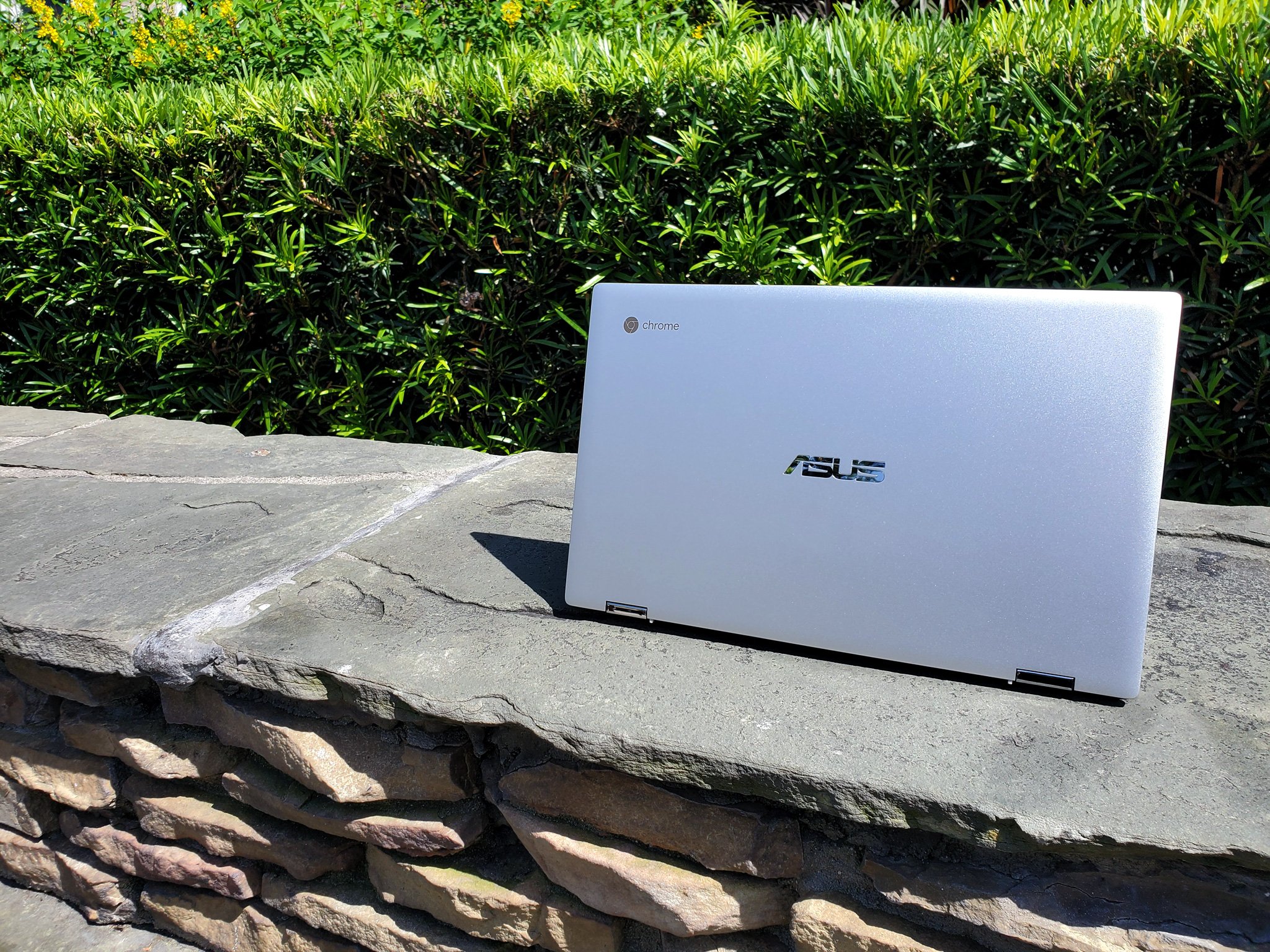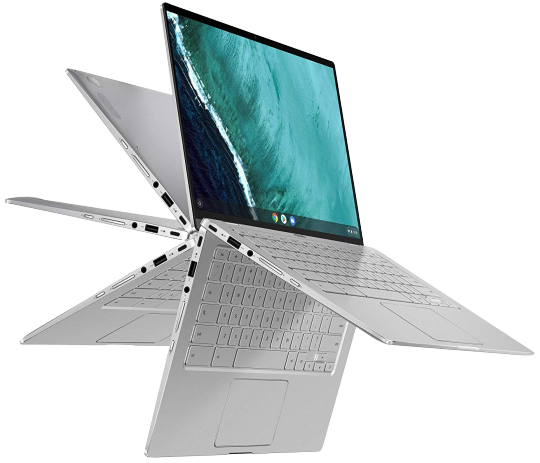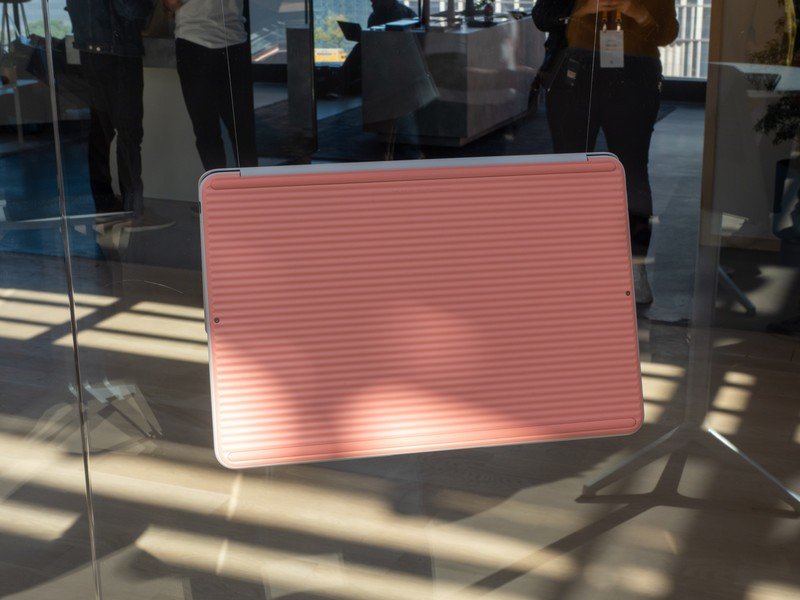ASUS Chromebook Flip C434 vs. Pixelbook Go: Which should you buy?

ASUS Chromebook Flip C434

The ASUS C434 may not be quite as fashionable as the flashy new magnesium Pixelbook Go, but it's got a better price, form factor, and a bigger screen despite being almost the same size. It's better in every measurable way.
ASUS Chromebook Flip C434
Bigger, better buy
Google Pixelbook Go

Google's newest Chromebook is very pretty and very premium. Unfortunately, compared to the C434, it just comes up short unless you want the 4K version or prefer a clamshell to a 2-in-1.
Google Pixelbook Go
Pretty but impractical
2019 has been a good year for powerful Chromebooks. Since the ASUS C434 has been out a few months already, we can say it is 100% worth purchasing over the Pixelbook Go outside of some niche cirumcstances. Here's why the C434 may not be the sexier Chromebook, but it's definitely the better one to buy.
Function and form: ASUS has both
Let's talk design philosophy for a moment here: the Google Pixelbook is a softer, rounder, more kind-looking Chromebook with warm colors and a simplified design with only one or two ports on each side. It's a good laptop to use out in public, like at the library or Starbucks, but if you're using it in bed or on the couch, you may run into the limits of that clamshell hinge. On the other hand, the ASUS C343 is all hard angles and bold lines, with a bevy of ports on each side and a uniquely swinging 360 2-in-1 hinge.
The C434's sometimes awkward hinge angles can give the Pixelbook Go an edge if you tend to use your Chromebook in laptop mode with the lid extended between about 90-120 degrees. However, if you use stand or tent mode half as often as I do, the C434's 2-in-1 hinge still takes the cake since it allows you to fold it back into a super-sized tablet when needed.
Despite the Pixelbook's screen being almost an inch smaller than the C434's, there's less than a half-inch difference between the footprint of the two laptops thanks to how well ASUS squeezes bezels around its screen. The C434 is heavier, but that's expected since it sports a larger screen and larger battery.
| Category | ASUS Chromebook Flip C434 | Google Pixelbook Go |
|---|---|---|
| Display | 14 inches LED-backlit NanoEdge touchscreen1920 x 1080 | 13.3-inch LCD touchscreen1920 x 10804K "Molecular Display" 3840 x 2160 |
| Processor | Intel Core m3, i5 or i78th Generation | Intel m3, i5, or i78th Generation |
| Storage | 64GB SSD128GB SSD | 64GB SSD128GB SSD256GB SSD |
| RAM | 4GB8GB | 8GB16GB |
| Battery | Li-Ion 48WhUp to 10 hours | 47 WhrUp to 12 hours |
| Charging | 45W USB-C | 45W USB-CUp to 2 hours after 20 minutes |
| Connectivity | 2x USB-C USB 3.1 Gen 11x USB-A USB 3.1 Gen 11x Audio combo jack | USB-C (x2)3.5mm headphone jack |
| Dimensions | 321 x 202 x 15.7 mm(12.64 x 7.95 x 0.62 in) | 311 x 206.3 x 13.4mm(12.2 x 8.1 x 0.5 in) |
Switching over to the internals, the specs on the C434 and Go are mostly the same. The Go has larger RAM and storage options, as well as a 4K display option if you're willing to go up to the $1,400 top-end model. However, the C434 has a USB-A port and a microSD card slot, both things that are sorely missed on the Pixelbook Go.
Be an expert in 5 minutes
Get the latest news from Android Central, your trusted companion in the world of Android
It's still mind-boggling that the only Chromebooks to lack microSD and USB-A are some of the most expensive around — the Pixelbook and a Pixelbook Go. It's also confusing the Google released a clamshell laptop in 2019 when 2-in-1s rule the Chromebook space and much of the laptop market at large right now.

The Pixelbook Go is pretty, but it's just impractical unless you fall into one of three camps:
- You only want to use a Chromebook in laptop mode and want the laptop to sit flat while you do.
- You want a 4K screen without lugging around a 4.5 pound behemoth like the Lenovo C630 (and you're willing to pay $1,400 for it).
- You want the latest Chromebook features and updates before any other Chromebook gets them.
Otherwise, go with the ASUS. Your wallet and sanity will thank you.

Best blend of power and portability
The newest Chromebook Flip packs a powerhouse 14-inch Chromebook into nearly the same size aluminum frame as the C302. It offers a great screen, backlit keyboard, and true 10-hour battery life. Upgrade your Chrome experience with the C434.
Ara Wagoner was a staff writer at Android Central. She themes phones and pokes YouTube Music with a stick. When she's not writing about cases, Chromebooks, or customization, she's wandering around Walt Disney World. If you see her without headphones, RUN. You can follow her on Twitter at @arawagco.

